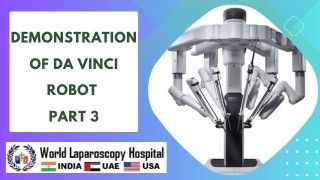Managing Catastrophic Portal Vein Hemorrhage: A Surgical Challenge in Biliary Procedures
Add to
Share
22 views
Report
2 days ago
Description
Portal vein bleeding is one of the most feared complications encountered during biliary surgery, particularly in complex cases involving inflamed, fibrotic, or anatomically distorted biliary structures. At World Laparoscopy Hospital (WLH), where advanced laparoscopic and robotic procedures are performed routinely, the management of such rare but life-threatening events reflects the institution’s expertise, precision, and adherence to global surgical standards. At WLH, portal vein injury typically arises during difficult cholecystectomy, biliary reconstruction, or surgery in patients with recurrent biliary infections and dense adhesions. The close proximity of the portal vein to the common bile duct makes dissection hazardous in challenging cases. Surgeons at WLH emphasize the Critical View of Safety (CVS) as the cornerstone of safe laparoscopic cholecystectomy. However, when inflammation or aberrant anatomy distorts normal planes, even experienced surgeons may encounter unexpected vascular injuries. When portal vein bleeding occurs, rapid recognition and immediate action are essential. The surgical team at WLH follows a systematic protocol: maintaining pneumoperitoneum, applying direct gentle pressure, identifying the exact bleeding point, and, if necessary, converting to open surgery without hesitation. Their multidisciplinary preparedness—anesthesia, vascular surgery backup, and advanced laparoscopic instruments—ensures that patients receive prompt and effective care. One of the unique strengths of WLH is its extensive training program, where surgeons from around the world learn not only standard techniques but also the management of rare vascular complications. Through high-definition video demonstrations, simulation training, and supervised operative experience, trainees gain exposure to strategies for preventing portal vein injury, such as meticulous dissection, use of energy devices in safe zones, and ICG fluorescence imaging to clearly identify vascular structures. Moreover, WLH’s postoperative care protocols ensure close monitoring of patients who have experienced vascular complications. Early detection of hemodynamic instability, liver dysfunction, or thrombosis allows timely intervention and optimal recovery. In conclusion, portal vein bleeding during biliary surgery remains a critical surgical challenge, but at World Laparoscopy Hospital, expert techniques, advanced technology, and superior training systems ensure safe handling of even the most complex situations. Their approach not only saves lives but also sets a benchmark for excellence in minimally invasive surgery worldwide.
Similar Videos






